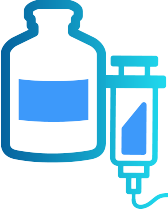Signs and treatment of MH
Knowing the signs of MH is crucial to effective treatment
Signs may arise at any time during anesthesia or the early postoperative period.1
Malignant Hyperthermia Signs2

Early metabolic signs
- Inappropriately elevated carbon dioxide production
(manifested as raised end-tidal CO2 on capnography or as tachypnea if the patient is breathing spontaneously) - Increased oxygen consumption
- Mixed metabolic and respiratory acidosis
- Profuse sweating
- Mottling of skin

Early cardiovascular signs
- Inappropriate tachycardia
- Cardiac arrhythmia (especially ectopic ventricular beats and ventricular bigemini)
- Unstable arterial pressure

Muscle rigidity
- Masseter spasm if succinylcholine has been used
- Generalized muscle rigidity
Later signs of MH
- Hyperkalemia
- Rapid increase in core body temperature
- Grossly elevated blood levels of creatine phosphokinase and myoglobin
- Dark urine (myoglobinuria)
- Severe cardiac arrhythmia and cardiac arrest
- Disseminated intravascular coagulation

Treatment should be started as soon as an MH crisis is suspected.2
MH Treatment
Suggested treatment protocol for MH includes
- Immediate discontinuation of all trigger agents
- Administration of nontriggering anesthetic if necessary
- Hyperventilation with 100% oxygen
- Dantrolene sodium, administered by continuous rapid intravenous push
- Cooling procedures until body temperature is <38.5°C
- Dextrose, insulin, calcium chloride, and possibly dialysis for correction of hyperkalemia
- Hyperventilation and possibly sodium bicarbonate for management of acidosis
- Antiarrhythmic drug treatment, if necessary
- Diuretic and fluid therapy to maintain high urinary output
